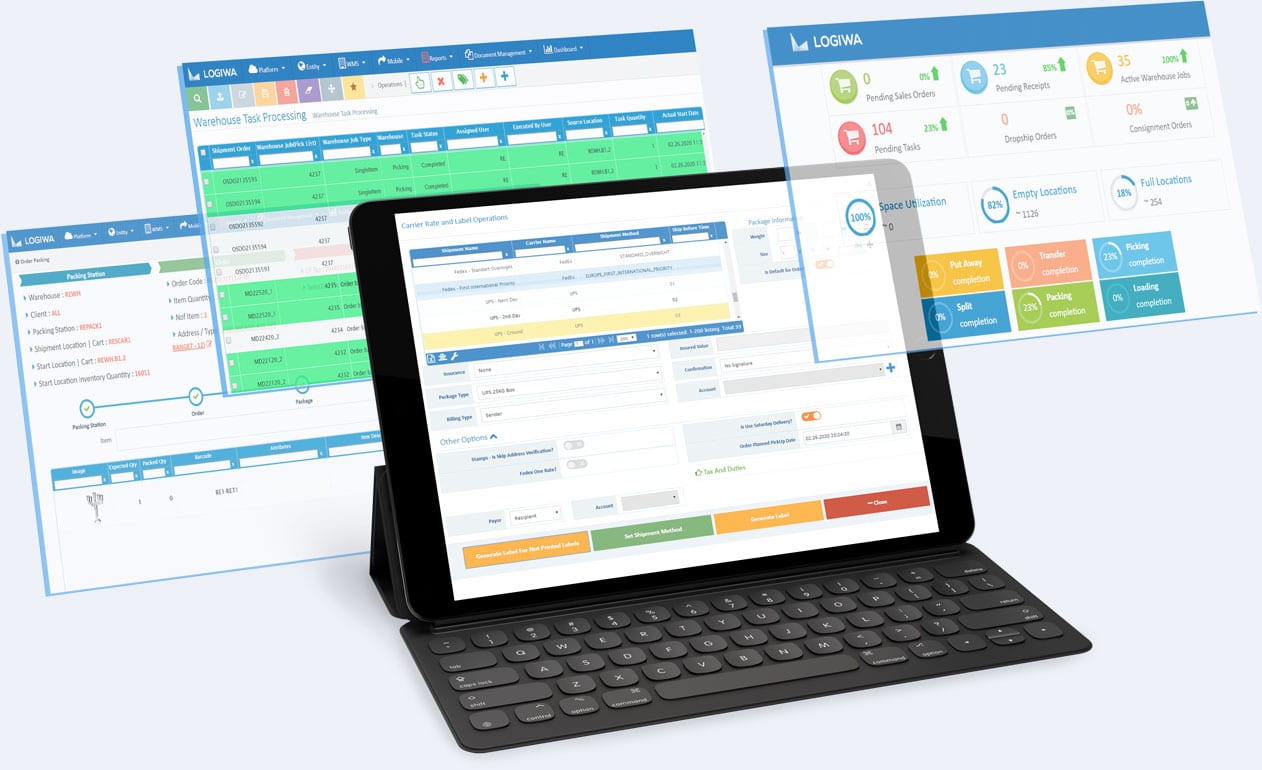The larger the ecommerce sector grows, and the more complex supply chains become, the smarter warehouse operators need to be in their approach to high-volume order fulfillment. It is no longer enough to design an efficient warehouse layout or anticipate the right amount of staff to help manage demand: you must be able to ensure orders run smoothly in both directions.
For retailers and third-party logistics (3PL) providers, returns management and reverse logistics have become two of the most impactful factors in long-term direct-to-consumer (DTC) success. But getting it right is easier said than done. Luckily, tools like artificial intelligence (AI) can help warehouses tackle returns head-on.
In this guide, we’ll explore:
- Ecommerce: A World of Returns
- The Cost of Poor Returns Management for Warehouses
- The Benefits of AI on Returns & Reverse Logistics
- Getting Started with Warehouse AI
Ecommerce: A World of Returns
According to University of Alabama’s study on “Information Search and Product Returns Across Mobile and Traditional Online Channels”, 30% of all ecommerce orders are returned by consumers, compared with 9% for brick-and-mortar stores. That statistic is staggering when one considers that the total number of ecommerce orders surpassed 5.2 trillion U.S. dollars worldwide in 2021 and is still steadily growing.
Should the current rate of ecommerce expansion continue its current trajectory, the anticipated cost of ecommerce returns will soon reach more than a trillion dollars a year for online sellers. If you have not made mastering the art of returns a priority, now is the time to assess your operations and make improvements.
The Cost of Poor Returns Management for Warehouses
The cost for retailers and 3PLs to manage reverse logistics is so high that many have begun to simply refund the purchase price and cut the losses directly when a customer wishes to make a return. The alternative returns process is considered more time consuming and expensive than letting shoppers hang on to the returns and offering their money back.
According to CBRE, the average cost of an ecommerce return ranges from $20.75 to $45.25. That factors in the costs of transportation, processing, and markdowns/liquidation to resell regardless of item value.
This is not an effective or affordable option for many warehouse operations. That said, the consequences of an ineffective returns operation can result in more than just loss of product, operational efficiency, and labor time. It can lead to irreparable brand damage and cause a snowball effect of financial losses. This makes the support of AI and machine learning solutions invaluable.

Transform your warehouse to a DTC fulfillment center
The Benefits of AI on Returns & Reverse Logistics
As with all aspects of order fulfillment, AI has become an indispensable asset in improving the quality and efficiency of returns for high-volume DTC operations. AI can lower the overall number of returns that occur by improving your fulfillment operations, as well as streamline the stages of returns management to get your inventory back in the supply chain as quickly as possible.
In order to accomplish “free, no-hassle” returns for your customers and regain lost profits for your business, AI helps in a variety of ways. Here are a few of the key benefits:
-
- AI can help you get returned goods back into the supply chain faster. AI disposition engines are a form of AI-based applications that allow you to make returns allocation decisions based on real-time data. They use AI algorithms to assess product condition, resale price, processing costs, future touch points, transportation fees, and storage requirements to get returns sorted for the highest possible recovery rate. By being able to automatically calculate the total returns management cost, AI can determine the best course of action for each return scenario and cut returns processing time by 75%.
- AI can help you root out the underlying causes of returns. It may seem obvious, but AI can also be used to identify problems in your fulfillment operations which may be causing an influx of returns. More specifically, AI can evaluate data such as customer reviews or track returns communication channels to accumulate actionable insights. In other words, it can help you react to consumer behavior, customize your returns management operations, and make changes to fulfillment processes that may be inhibiting success.
- AI can help you recover higher profits from returned goods. Once items are back in your possession, it is a common mistake to list your second-hand items on a single online marketplace at one set price. With AI supporting your returns management operations, however, you could use intelligent dynamic pricing (or data-driven intelligent pricing) to ensure the maximum value can be earned on all returned items.
- AI can help route returns to the best fulfillment centers. Once a returned order arrives at your warehouse or returns center, AI can help route items to the next best internal storage location, fulfillment center, or geographic region based on demand, item availability, and the costs associated with transferring the item somewhere else in your fulfillment network. Just like smart inventory management and directed putaway algorithms, AI can give you clarity and control to manage returned inventory like it never even left.
Getting Started with Warehouse AI
Customer returns are inevitable. They are part of the ecommerce and unavoidable no matter how high-tech your warehouse operations become. But for warehouse operators, return rates can be managed and their negative impact can be reduced with the help of AI-powered warehouse management solutions.
To learn more about how Logiwa handles returns management and reverse logistics, reach out to our warehousing experts or request a demo today.





